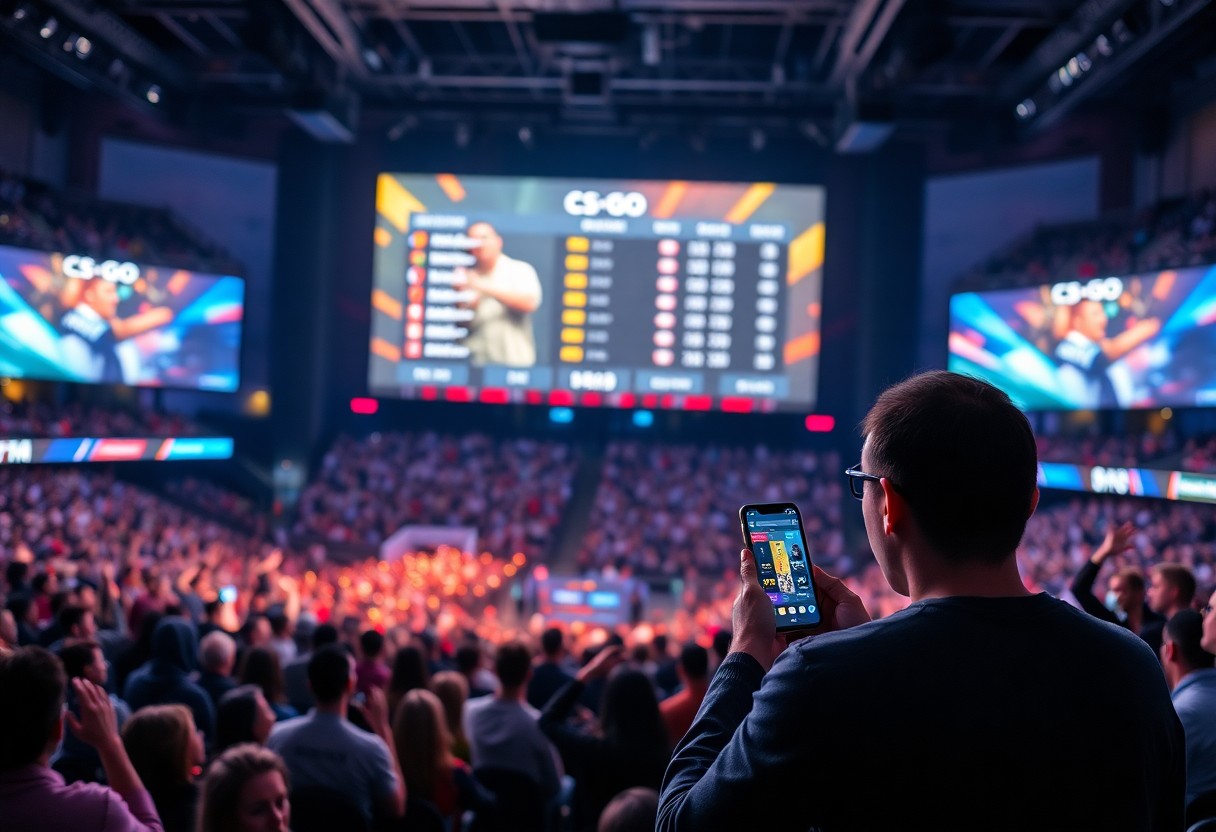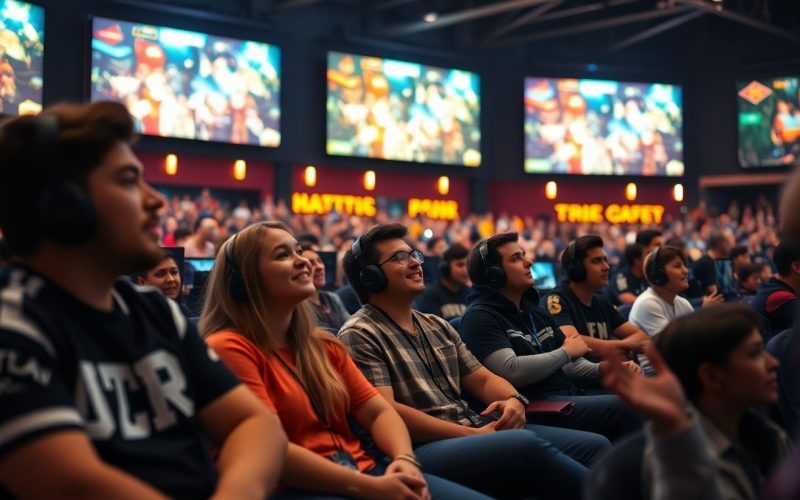It’s important to understand the complexities involved in esports contracts, as they often contain hidden pitfalls that can significantly impact a player’s career. While many see esports as a path to fame and fortune, the reality can be quite different. Numerous players face exploitative terms, inadequate representation, and unrealistic expectations, leading to potential financial and emotional distress. This blog post examines into the often overlooked aspects of esports contracts, shedding light on the challenges players encounter and the importance of due diligence before signing on the dotted line.
Understanding Esports Contracts
Before venturing into the complexities of esports contracts, it is important to grasp their significance within the industry. As competitive gaming continues to grow in popularity, the contractual agreements between players, teams, and sponsors become increasingly sophisticated. These contracts dictate the terms of employment, rights to image and likeness, revenue sharing, and more. Navigating through these legal documents can be daunting but is important for securing a player’s career, ensuring they understand their commitments and rights within the dynamic landscape of esports.
Key Components of Esports Contracts
Contracts typically contain several key components that outline the obligations and expectations of each party involved. Terms of duration, performance metrics, and remuneration are standard aspects that must be clearly defined. Furthermore, rights related to broadcasting, merchandise, and sponsorship deals can significantly impact a player’s earning potential and career trajectory. Understanding these components is vital, as they often vary across different organizations and can influence a player’s future in esports.
The Role of Sponsorships and Endorsements
Esports is increasingly intertwined with sponsorships and endorsements, which can substantially enhance a player’s income. These agreements often allow players to leverage their public image and fan following to secure lucrative deals with brands seeking exposure in the gaming community. Sponsorships can range from team uniforms to product placements and social media promotions, each adding layers of complexity to the contract. Players should be aware of how these deals are structured, as they can impact both the personal and team contract arrangements.
Plus, the nature of sponsorships and endorsements often requires players to navigate their obligations both to their teams and their partners, leading to potential conflicts of interest. Navigating these relationships can be delicate, as commitments to one brand may clash with another. The ability to successfully balance these endorsements while maintaining peak performance can also weigh heavily on a player’s mental and emotional wellbeing. Understanding the nuances of these contracts is vital to ensure that players are not only maximizing their earnings but also safeguarding their professional reputations.
Common Pitfalls in Esports Contracts
It is necessary to recognize the common pitfalls that can arise in esports contracts, as they often contain clauses that can be detrimental to players and teams alike. One significant element that frequently surfaces in these agreements is exploitative clauses, which can undermine the player’s career and financial stability. Companies sometimes insert terms that disproportionately favor their interests, such as restrictive non-compete agreements, overly long contract durations, or vague performance benchmarks that may lead to sudden termination or reduced pay. These clauses can limit a player’s opportunities and leave them vulnerable to exploitation, making it imperative for players to scrutinize every detail before signing on the dotted line.
Exploitative Clauses
Around the esports industry, exploitative clauses have become a common concern, as many players, especially those early in their careers, may not fully understand the implications of such terms. For instance, some contracts may include revenue-sharing agreements that are heavily weighted against players, leaving them with a minimal portion of the earnings despite being the primary drivers of their fame and success. Such clauses can also be camouflaged within legal jargon, making them difficult for players to detect. Additionally, the pressure to sign contracts quickly or accept offers without thorough examination can lead to regrettable decisions that have long-term consequences.
Lack of Legal Representation
Esports contracts are often complex and filled with nuances that require a solid understanding of both legal terminologies and industry standards. Esports professionals frequently find themselves navigating these intricate documents without sufficient legal representation or guidance. This lack of support can result from a combination of limited resources, particularly among burgeoning players, and a general unfamiliarity with the legal aspects of the gaming industry. As a hardworking player, it is easy to overlook potential pitfalls in the excitement of securing a contract, but without the benefit of professional legal advice, players risk compromising their rights and financial well-being in the long run.
Lack of legal representation also extends to misconceptions regarding the need for a lawyer in an industry known for its rapid growth and evolving regulations. Many players may assume they can negotiate effectively without an attorney, which can lead to naïve decisions regarding contract terms. Involving a legal expert from the outset can help ensure that contracts are fair, reasonable, and in alignment with current industry standards. Players and teams both stand to benefit from prioritizing legal expertise in negotiations to protect their interests and foster sustainable careers.
Case Studies of Contract Disputes
While the esports industry continues to grow exponentially, the complexity of player contracts has led to several disputes that highlight the potential pitfalls of contractual agreements. These disputes often arise from vague language, misinterpretation, or breach of contract, bringing to light the varying interests of teams, players, and sponsors. Here are some notable case studies:
- Team SoloMid vs. Yihong “Doinb” Gao (2020): A contractual disagreement arose over the interpretation of a buyout clause, leading to a public legal battle that brought attention to the need for clearer definitions in contracts.
- OpTic Gaming (2018): The organization faced a lawsuit from former players concerning unpaid salaries and a breach of contract related to sponsorship deals. The case underscored the significance of payment clauses in player contracts.
- T1 vs. Tyler “Ninja” Blevins (2019): A dispute regarding sponsorship obligations and contract termination created a rippling effect in the streaming community, raising questions about influencer agreements in esports.
- FaZe Clan and Counter-Strike Players (2021): A legal confrontation occurred when veterans accused FaZe Clan of failing to honor contract terms during a roster shuffle, thus shedding light on how roster changes can affect contractual obligations.
- Cloud9 vs. former League of Legends players (2021): This case involved allegations of misallocated prize money and broken promises, illustrating the importance of financial transparency in contracts.
Notable Legal Battles in Esports
On the legal front, esports has seen some contentious battles that serve as pivotal learning experiences for all players involved. In particular, the cases surrounding player pay and rights to sponsorships underscore the complexities within esports contracts. For instance, the lawsuit filed against OpTic Gaming not only led to financial recovery for the players but also prompted wider industry discussions on compensation structure and player welfare. Furthermore, the case of T1 and Ninja highlighted the conflicts that can arise between content creators and organizations when contractual obligations are not met.
While these legal battles are often damaging, they also pave the way for new standards in the esports industry. As both players and organizations navigate these turbulent waters, there remains an opportunity for reform that can lead to clearer guidelines and better practices in contractual agreements. A key takeaway from these disputes is the importance of fostering communication and establishing clear expectations between all parties involved in esports contracts.
Lessons Learned from Disputes
Lessons from these disputes reveal the necessity for greater transparency and clarity in esports contracts. Players must understand their rights and obligations, while organizations should commit to a fair and just approach to negotiations. The contractual ambiguity often leads to tension and misinterpretation between players and teams, which can have long-lasting implications for both parties.
Notable outcomes from these disputes have led to calls for standardized contracts to protect both players and organizations. The need for more detailed and explicit terms regarding payment, performance metrics, and sponsorship obligations is becoming increasingly clear. As the esports scene evolves, it is necessary that stakeholders actively engage in refining contractual standards that meet the needs of an expanding and diverse player base while ensuring the integrity of competitive gaming. This proactive approach not only mitigates disputes but also enhances the overall professional environment in esports, fostering growth and collaboration within the industry.
The Impact of Contracts on Player Development
To understand the depth of esports contracts, one must first examine how these agreements shape player development over the long term. While contracts can provide financial stability and support, they often come with stringent expectations that can hinder a player’s growth. Young esports athletes may find themselves under immense pressure to perform consistently, leading to a narrow focus on immediate success rather than long-term skill enhancement and personal growth. The single-minded pursuit of victory can stifle creativity and exploration within the game, limiting players’ potential to innovate and adapt in an ever-evolving competitive landscape.
Career Limitations
To further complicate matters, the restrictive nature of many esports contracts can confine players to specific teams, games, or roles, thereby narrowing their career trajectories. For instance, a player signed to a particular organization may be obligated to compete in a designated title for an extended period, even if their interests or skills evolve over time. This can lead to dissatisfaction and stagnation, as players might feel trapped in a situation that does not align with their aspirations. As the esports industry matures, such limitations can create barriers for emerging talent, making it difficult for them to explore various opportunities within the expansive world of gaming.
Mental Health Implications
Across the gaming landscape, the pressure to excel can take a substantial toll on players’ mental health. The expectations outlined in their contracts, combined with the intense scrutiny from fans and media, can lead to heightened stress, anxiety, and burnout. Emotional well-being is often compromised when success is prioritized over personal health, making it challenging for players to engage with the game positively. Moreover, the lack of a work-life balance, exacerbated by the demands of training and competition, can further contribute to mental health struggles, forcing many to prioritize their careers at the expense of their overall well-being.
Understanding the mental health implications of esports contracts is imperative for addressing these concerns. It is imperative for teams and organizations to cultivate an environment that values player well-being alongside competitive success. Implementing mental health resources, fostering open communication about wellness needs, and encouraging downtime can promote resilience and ultimately support players in their growth. Recognizing that mental health is a vital component of an athlete’s career longevity can lead to a more sustainable and fulfilling esports ecosystem for all individuals involved.
The Future of Esports Contracts
All eyes are on the evolution of esports contracts as the industry progresses and matures. Several emerging trends shape how agreements are structured, ensuring a more equitable environment for players and organizations alike. Notably, there is a pronounced shift towards including clauses that protect player mental health and well-being, alongside provisions for revenue sharing that reflect the lucrative nature of the gaming industry. Enhanced transparency regarding the terms of contracts and player roles is also becoming standard, increasing trust between all parties involved.
Emerging Trends in Contract Agreements
After observing recent developments in the esports landscape, it is evident that new contract frameworks are beginning to emerge. Teams are increasingly adopting flexible contracts that adapt to the fast-paced nature of the gaming world. This flexibility allows players to explore opportunities within multiple titles and teams without being heavily penalized. Moreover, the involvement of player representatives is gaining momentum, ensuring that individual concerns are voiced and addressed during negotiations. This trend heralds a more player-centric approach in contract creation.
The Role of Regulatory Bodies
Against this backdrop of evolution, the role of regulatory bodies becomes more pronounced. Regulatory organizations aim to establish standardized practices in the esports industry, ensuring that contracts adhere to ethical and legal standards. These bodies advocate for fair treatment of players, pushing for uniform regulations that prevent exploitation and promote a healthy competitive environment. By advocating for clearer guidelines, they help to elevate the professional status of players within the esports ecosystem.
Considering the rapid expansion of esports, effective regulatory oversight is paramount to maintaining fairness in contract agreements. Such bodies can assist in developing industry norms that define contractual obligations clearly, reducing ambiguity that often leads to disputes. By fostering dialogue between stakeholders—players, teams, sponsors, and game developers—regulatory entities work towards creating a more transparent and supportive ecosystem that benefits the entire esports community.
Summing up
From above, it is clear that the dark side of esports contracts presents significant challenges for players and organizations alike. Many contracts are laden with hidden clauses that can exploit young talent, binding them to unfavorable terms that limit their freedom and financial security. As the esports industry continues to grow, the need for transparency and fair practices in contract negotiations becomes increasingly important. Players must be educated on the intricacies of their agreements in order to protect their interests and avoid potential pitfalls that can arise from unbalanced terms.
Additionally, organizations must strive to create a more equitable environment by adopting industry standards that prioritize player welfare. As stakeholders work towards establishing better contractual processes, it is crucial to foster a culture of respect and integrity within the esports community. By addressing these underlying issues, the industry can ensure a more sustainable future for its athletes, enabling them to thrive and contribute positively to the rapidly evolving landscape of competitive gaming.







